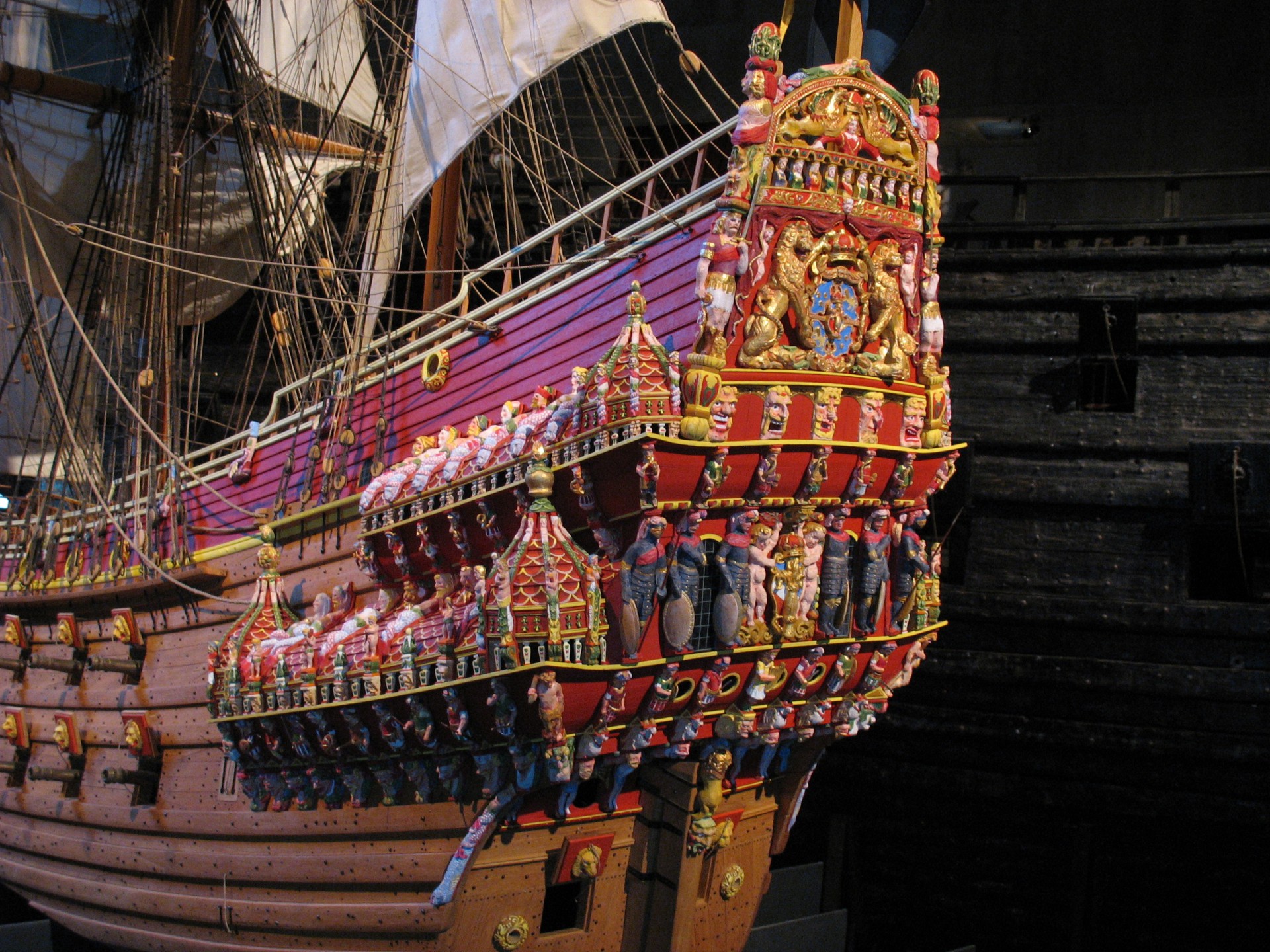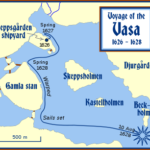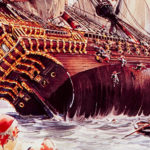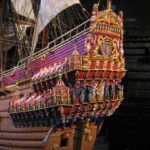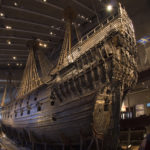On August 10th, 1628, the 64-gun warship Vasa left the port of Stockholm while the excited crowd were watching her departure. After a few minutes the ship encountered a strong wind and it was heeled over to the port. The gunports were open to make farewell shots and this caused the water to rush into the ship. Vasa sank after a single mile of sailing. The crew were allowed to take their families and guests along for the first part of the passage so there were around 150 people on the ship. 30 of them died onboard. Her valuable bronze cannons were salvaged.
Vasa was one of the most powerful warships of her time. Though she had big technical problems such as balance, instability and and heaviness. The main problem was to let her sail with these problems. The king, Gustavus Adolphus was impatient to see her sailing while he was leading the army in Poland. Also the king’s counselors didn’t have the courage to talk about the ship’s structural problems or to have the maiden voyage postponed.
Vasa laid down under the sea for 333 years and finally on the 24th of April, 1961, Vasa returned to the surface. From 1961 to 1988, Vasa stayed in a temporary facility called Wasavarvet (“The Vasa Shipyard”). The restoration started. For 17 years it was sprayed with a chemical solution to get rid of the water that Vasa was full of. In 1981, the Swedish government decided to build a permanent building for Vasa and organized a design competition that was won by Swedish architects Månsson and Dahlbäck. Vasa moved to the half-finished Vasa Museum in December 1988. The museum was officially opened in 1990.
Vasa Museum is one of the highly visited attractions in Scandinavia. For example last year 1.2 million people visited the museum. In total 23 million people visited since its opening. The Flying Dutchman ship in the Pirates of the Caribbean movie series was inspired by Vasa.

I had the chance to visit the museum and see the great Vasa ship. It is definitely a great museum to visit in Stockholm. It is also very easily accessible from old town, Gamla Stan. You can see some technical details of Vasa. For more visit the museum website.
Length
- Total length including bowsprit – 69 m (estimated)
- Hull length including beakhead – 61 m
- Hull length without beakhead – 47.5 m
Breadth
- Maximum breadth – 11.7 m
Height
- Height of main truck above the keel – 52.5 m (estimated)
- Height of the stern – 19.3 m
Draught
- 4.8 m
Displacement
- 1210 tonnes
Sail area
- 1275 square meters
Number of sails
- 10 (of which six survive)
Armament
64 bronze cannon:
- 24-pounder – 48
- 3-pounder – 8
- 1-pounder – 2
Stormstycken
- 6 (of three different sizes)
Crew
- Mariners – 145 men
- Soldiers – 300 men (not on board when the ship sank)
- Of the approximately 150 people thought to have been on board when the ship sank, about 30 died. The skeletons of at least 16 persons were found in and around the ship during the archaeological excavations.

